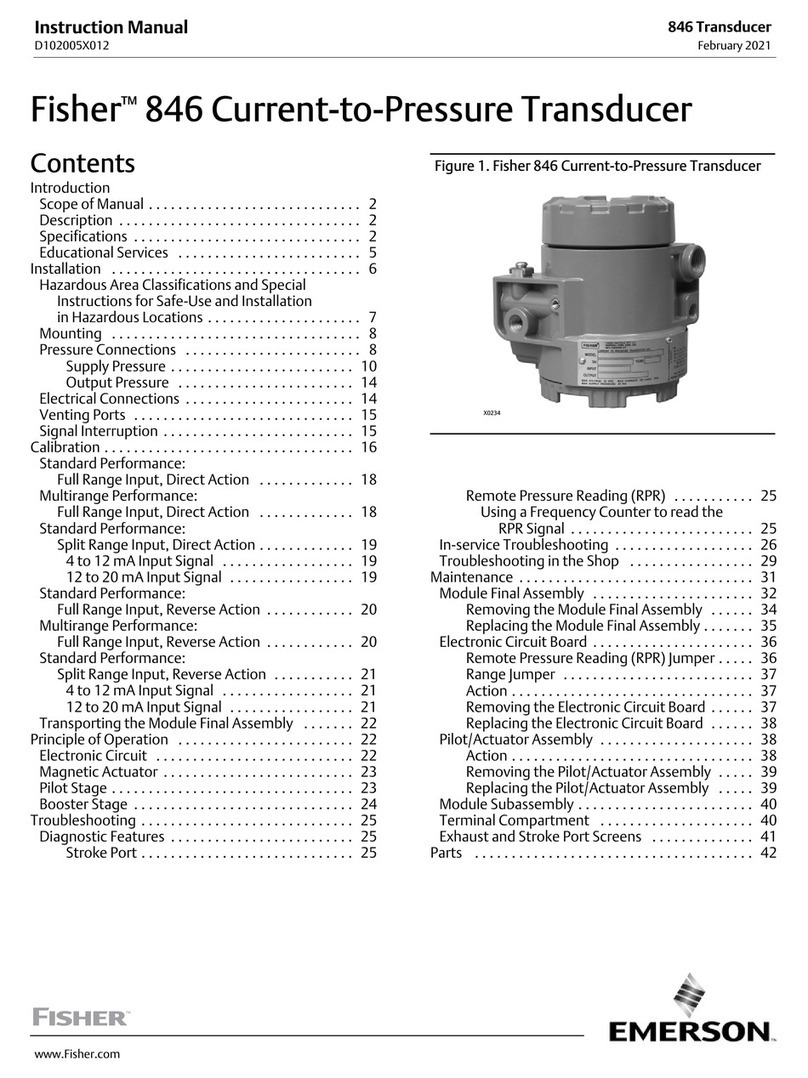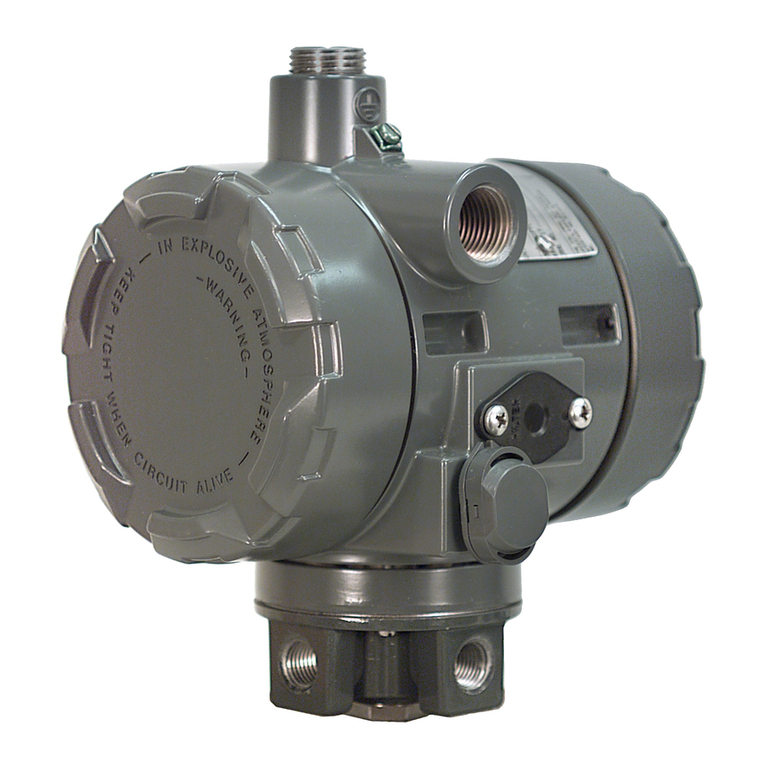
Instruction Manual
D101351X012
646 Transducer
January 2015
2
Table 1. Specifications
Input Signal
4-20 mA DC, constant current with 30 VDC maximum
compliance voltage
Equivalent Circuit
The 646 equivalent circuit is a series circuit consisting
of a constant voltage drop (battery) of approximately
2.1 VDC and a total resistance of 143 ohms. Input is
shunted by three 6.8 V zener diodes (see figure 6).
Output Signal
0.2 to 1.0 bar (3 to 15 psig) direct acting only
Supply Pressure(1)
Recommended: 1.4 bar (20 psig)
Minimum: 1.4 bar (20 psig)
Maximum: 3.4 bar (50 psig)
Average Steady‐State Air Consumption(2)(3)
0.08 m3/hr (3 scfh) at 1.4 bar (20 psi) supply pressure
Maximum Output Air Capacity(2)
8.0 m3/hr (300 scfh) at 1.4 bar (20 psig) supply
pressure
Performance(4)
Reference Accuracy: ±0.5% of full scale output span;
includes combined effects of hysteresis, linearity, and
deadband
Independent Linearity: ±0.5% of full scale output span
Hysteresis: 0.4% of full scale output span
Frequency Response: Gain is attenuated 3 dB at 10 Hz
with transducer output signal piped to a typical
instrument input
Temperature Effect: ±4% of full scale output span per
55_C (100_F) change
Supply Pressure Effect: 0.2% of full scale output span
per psi supply pressure change
Vibration Effect: Less than 1% of full scale output span
when tested to SAMA PMC 31.1, Condition 3
Electromagnetic Compatibility
Meets EN 61326‐1 (First Edition)
Immunity—Industrial locations per Table 2 of
the EN 61326‐1 standard. Performance is
shown in table 2 below.
Emissions—Class A
ISM equipment rating: Group 1, Class A
Operating Ambient Temperature Limits(1)
-40 to 71_C (-40 to +160_F)
Electrical Classification
CSA—Intrinsically Safe, Explosion proof, Type n,
Dust‐Ignition proof, DIV 2
FM—Intrinsically Safe, Explosion proof, Type n,
Non‐incendive, Dust‐Ignition proof
ATEX—Intrinsically Safe, Flameproof, Type n
IECEx—Intrinsically Safe, Flameproof, Type n
Refer to Hazardous Area Classifications and Special
Instructions for the “Safe Use” and Installation in
Hazardous Locations starting on page 5 for
additional information.
Housing
CSA—Type 3 Encl.
FM—NEMA 3, IP54
ATEX—IP64
IECEx—IP54
Mount instrument with vent on side or bottom if
weatherproofing is a concern.
Other Classifications/Certifications
INMETRO— National Institute of Metrology, Quality
and Technology (Brazil)
KGS— Korea Gas Safety Corporation (South Korea)
Contact your Emerson Process Management sales
office for classification/certification specific
information
Connections
Supply and Output Pressure: 1/4 NPT internal
connection
Vent: 1/4 NPT internal
Electrical: 1/2‐14 NPT conduit connection
Wire Size: 18 to 22 AWG
Adjustments
Zero and Span: Trim potentiometers (20 turn) for
zero and span adjustments are located under the
housing cap (see figure 7)
-continued-

































